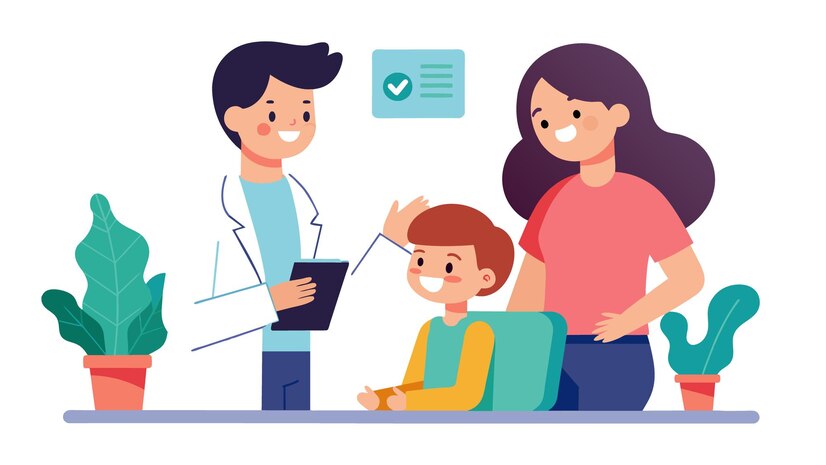Gamification in healthcare refers to applying game design principles and mechanics to motivate individuals to achieve health-related behaviors or goals. For example, in medical settings, gamification can encourage patients to adhere to treatment plans, exercise regularly, or manage chronic conditions like diabetes. This involves incorporating gaming elements such as rewards, points, levels, challenges, and social interactions into healthcare interventions. The goal is to make health-related tasks more enjoyable and interactive, thereby increasing patient engagement, fostering behavior change, and improving health outcomes.
Additionally, gamification can aid healthcare providers in tracking patient progress and offering personalized feedback. Overall, gamification holds promise for promoting healthier lifestyles, improving patient-provider communication, and enhancing healthcare delivery. Enhance your knowledge by participating in our conference “Digital Health & AI Innovation Summit” organized by World BI.
Gamification- Gamification in healthcare applies gaming elements to motivate patients to achieve health goals, like sticking to treatment plans or managing conditions.
- Integrating rewards, points, and challenges into medical tasks, boosts engagement, encourages behavior change, and improves health outcomes.
- It also aids providers in tracking progress and offering personalized feedback, promising healthier lifestyles and better healthcare delivery.
- A pediatric patient is a child undergoing medical treatment.
- The term "pediatric" relates to the medical field dedicated to the health of infants, children, and teenagers.
- Pediatric patients seek medical attention for reasons such as regular check-ups, vaccinations, illnesses, injuries, or chronic conditions.
- Healthcare professionals specializing in pediatrics focus on diagnosing, treating, and managing medical concerns specific to children, ensuring their overall well-being from infancy to adolescence.

- Gamification in pediatric patient care presents numerous benefits that significantly enhance the healthcare experience for children.
- One of its primary advantages is its capacity to engage and motivate young patients, transforming routine medical tasks into enjoyable activities.
- By integrating playful elements such as rewards and challenges, gamification effectively diminishes the anxiety often associated with medical procedures, thereby fostering a more comfortable atmosphere for pediatric patients.
- This approach encourages children to adhere to their treatment plans, thereby ensuring better health outcomes.
- Gamification facilitates social interaction and support among pediatric patients, fostering a sense of camaraderie and community.
- Gamification proves to be a valuable tool in pediatric healthcare, enhancing engagement, reducing anxiety, improving treatment adherence, and providing a holistic approach to patient care.
Gamification Strategies tailored for pediatric patient care encompass a variety of approaches to engage and motivate young patients:
- Interactive Apps
- Reward Systems
- Virtual Reality Experiences
- Storytelling
- Incorporating Play into Education
- Peer-to-Peer Challenges
- Customizable Avatars
- Progress Tracking
- Collaborative Games
- Incentivizing Physical Activity
Gamification enhances pediatric patient care by:
Increasing Engagement:By making healthcare tasks more enjoyable and interactive, gamification keeps children engaged in their treatment process.
Reducing Anxiety:Incorporating game elements helps distract pediatric patients during medical procedures, reducing anxiety and stress.
Improving Treatment Adherence:Gamification encourages children to adhere to treatment plans through rewards and incentives, leading to better health outcomes.
Providing Education:Gamified platforms offer educational content in a fun and interactive manner, helping children understand their conditions and treatments.
Fostering Social Interaction:Gamification promotes peer-to-peer interaction and support among pediatric patients, creating community and camaraderie.
Empowering Patients:By allowing children to customize avatars and track their progress, gamification empowers them to manage their health actively.
Implementation ConsiderationImplementation Considerations for Gamification in Pediatric Patient Care:
- Patient-Centric Design
- Educational Integration
- Accessibility Focus
- Workflow Integration
- Balancing Fun and Healthcare
- Monitoring and Feedback Mechanisms
- Data Privacy Compliance
- Parental Engagement
- Staff Training and Support
Gamification has emerged as a promising approach in pediatric patient care, yet it encounters several challenges and limitations unique to this domain:
- Crafting games that resonate with diverse age groups poses a creative hurdle.
- Solutions must be both entertaining and educational, catering to the specific needs and preferences of children of varying ages.
- Ensuring accessibility for children with diverse abilities and health conditions is paramount.
- Developers face the challenge of designing games that accommodate various disabilities and health issues while maintaining engagement.

- Maintaining children's interest in gamified healthcare interventions over extended periods presents a persistent challenge.
- Solutions must counteract boredom and repetition, especially in cases requiring prolonged treatment.
- Safeguarding sensitive healthcare information collected through gamified interventions is critical.
- Developers must prioritize robust privacy and security measures to protect pediatric patients' data.
- Seamlessly integrating gamified interventions into existing healthcare systems requires technical finesse.
- Compatibility with electronic health records and other infrastructure is vital for successful implementation.
- The development and maintenance of gamified healthcare solutions demand significant resources.
- Not all healthcare providers possess the necessary expertise or resources for effective implementation and sustenance.
- Designing interventions that blend engagement with evidence-based healthcare practices presents a multifaceted challenge.
- Rigorous evaluation methodologies are essential to validate the efficacy of gamified approaches.
- Garnering parental involvement and support is crucial for the success of pediatric gamified interventions.
- Engaging parents, addressing concerns, and ensuring their active participation are pivotal but challenging endeavors.
Gamification offers a promising avenue for pediatric patient care, fostering engagement and empowerment. However, successful implementation hinges on addressing patient needs, integrating education, ensuring accessibility, and maintaining data privacy. With careful consideration and collaboration, gamification stands to revolutionize treatment experiences, enhancing outcomes for children and families alike. World BI is hosting an informative conference “Digital Health & AI Innovation Summit” focusing on the use of gamification for patients. This event will delve into detailed topics related to leveraging game design principles to enhance patient engagement and outcomes. Don't miss the opportunity to expand your knowledge – join World BI for more information!